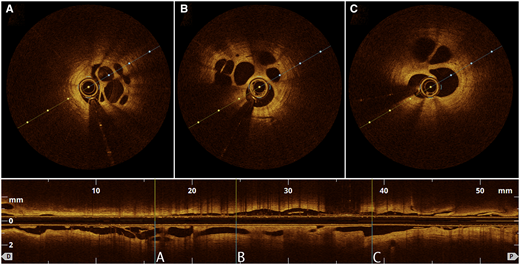Discover and read the best of Twitter Threads about #nirs
Most recents (4)
An overly-long and still non-comprehensive reading list for understanding #NIRS #muscleoxygenation in sport science! 🧵
1/15
Start with this concise opinion piece from Perrey on the emerging promise and future direction of NIRS research & application
pubmed.ncbi.nlm.nih.gov/35321522/
1/15
Start with this concise opinion piece from Perrey on the emerging promise and future direction of NIRS research & application
pubmed.ncbi.nlm.nih.gov/35321522/

2/15
Perrey & Ferrari's review on NIRS in the context of sport science gives background and is a great jumping off point for NIRS studies in your particular sport of interest
pubmed.ncbi.nlm.nih.gov/29177977/
Perrey & Ferrari's review on NIRS in the context of sport science gives background and is a great jumping off point for NIRS studies in your particular sport of interest
pubmed.ncbi.nlm.nih.gov/29177977/
3/15
Barstow has a comprehensive overview of technically and biologically important aspects of NIRS, with recommendations for standardised methodology and nomenclature. This is a must read IMO for starting to understand the nuances of NIRS interpretation
pubmed.ncbi.nlm.nih.gov/30844336/
Barstow has a comprehensive overview of technically and biologically important aspects of NIRS, with recommendations for standardised methodology and nomenclature. This is a must read IMO for starting to understand the nuances of NIRS interpretation
pubmed.ncbi.nlm.nih.gov/30844336/

1/25
How would you tackle this heavily calcified LAD with calcified #nodule that was appropriately identified by intravascular imaging? #OCT
doi.org/10.1093/ehjcr/…
In this #EHJCaseReports #tweetorial we take a deep dive into the Rx of #calcified coronary lesions.
#Cardiotwitter
How would you tackle this heavily calcified LAD with calcified #nodule that was appropriately identified by intravascular imaging? #OCT
doi.org/10.1093/ehjcr/…
In this #EHJCaseReports #tweetorial we take a deep dive into the Rx of #calcified coronary lesions.
#Cardiotwitter

2/25
Calcified lesions are top of the totem pole of complex PCI
Main armamentaria are balloon-based #IVL & ablation-based (rotational/orbital) techniques, while ancillary tools eg guide extension catheters are useful too. eurointervention.pcronline.com/article/intrav…
#EHJCaseReports #tweetorial
Calcified lesions are top of the totem pole of complex PCI
Main armamentaria are balloon-based #IVL & ablation-based (rotational/orbital) techniques, while ancillary tools eg guide extension catheters are useful too. eurointervention.pcronline.com/article/intrav…
#EHJCaseReports #tweetorial

3/25
What do you see with this non-compliant balloon in this calcified RCA?
What would you do next? Poll in next tweet! doi.org/10.1093/ehjcr/…
What do you see with this non-compliant balloon in this calcified RCA?
What would you do next? Poll in next tweet! doi.org/10.1093/ehjcr/…

1/24
A picture is worth a thousand words. This month's #EHJCaseReports tweetorial focuses on intravascular imaging in coronary intervention.
For starters, what do you see on this #OCT image of an intracoronary honeycomb🐝?
academic.oup.com/ehjcr/article/…
Poll 👇
#cardiotwitter
A picture is worth a thousand words. This month's #EHJCaseReports tweetorial focuses on intravascular imaging in coronary intervention.
For starters, what do you see on this #OCT image of an intracoronary honeycomb🐝?
academic.oup.com/ehjcr/article/…
Poll 👇
#cardiotwitter

2/24
The intracoronary honeycomb on the image above is ⬇️
Find out the answer in #EHJCaseReports:
academic.oup.com/ehjcr/article/…
The intracoronary honeycomb on the image above is ⬇️
Find out the answer in #EHJCaseReports:
academic.oup.com/ehjcr/article/…
3/24
Honeycomb-like structure, a rare cause of myocardial ischaemia has multiple communicating channels divided by thin septa. Angiographically fuzzy & hazy appearance often without significant stenosis, they're best detected on high-resolution IVUS/OCT
academic.oup.com/ehjcr/article/…
Honeycomb-like structure, a rare cause of myocardial ischaemia has multiple communicating channels divided by thin septa. Angiographically fuzzy & hazy appearance often without significant stenosis, they're best detected on high-resolution IVUS/OCT
academic.oup.com/ehjcr/article/…

I'll summarize a recent discussion focused on some of the main challenges in developmental cognitive neuroscience, especially for young participants & longitudinal data. Please add to this & maybe we can turn it into a resource for the field 1/11 #mri #eeg #nirs #devneuro #brain
1) Vascular differences: Does the difference in the vascular structure between infants/toddlers/older children lead to problems with interpreting/analyzing #dedvneuro data? Do we need age-specific #hrf functions? What about circadian rhythm effects? 2/11
2) Parcellations/templates: Which #template should you use when analyzing longitudinal data, especially if the brain changes a lot over the study's time course (e.g. age 0-5). Is 'template fit' a confound in these studies? Do we need age-specific parcellations? 3/11
